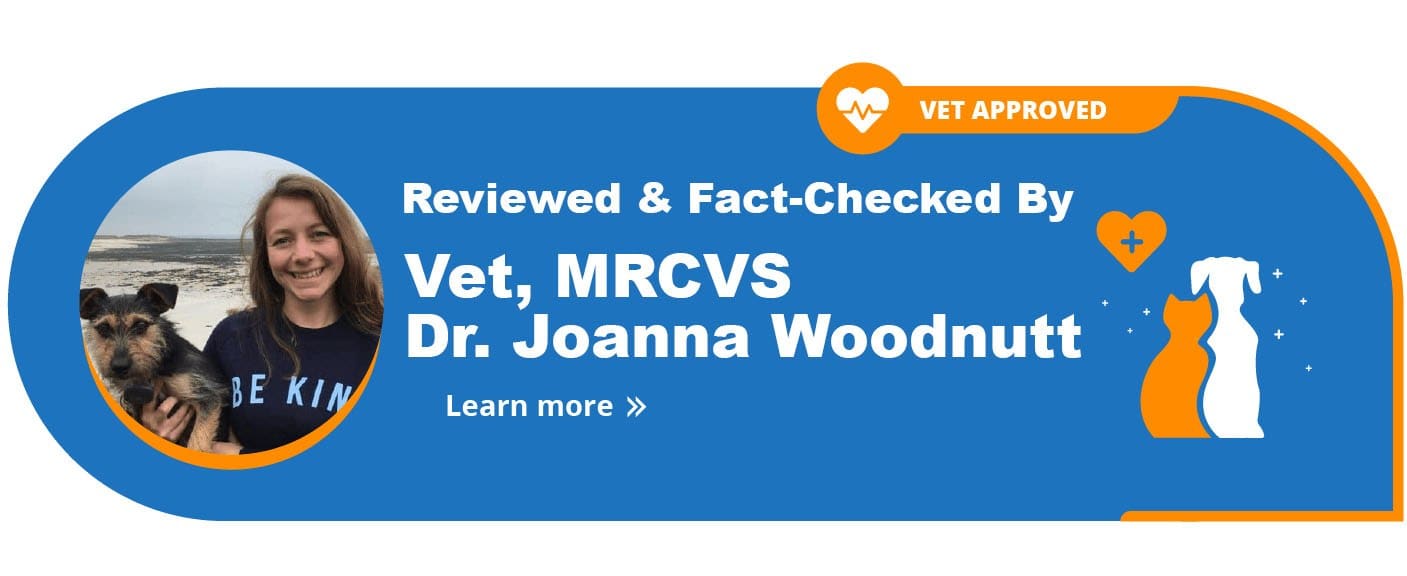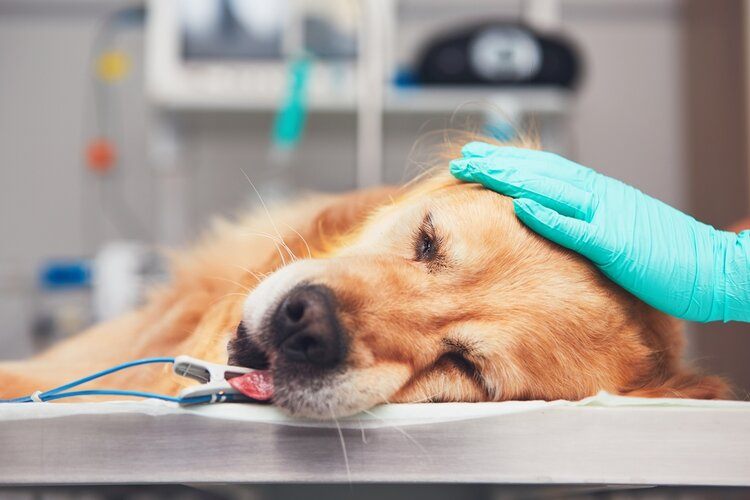My Dog Ate Tin Foil What Do I Do
 Though we would never consider it to be a tasty snack, dogs will eat all sorts of inedible items and aluminum foil is one of them! This usually happens because the foil has been wrapped around food that your dog finds delicious, and is often stolen from the trash can or kitchen counter.
Though we would never consider it to be a tasty snack, dogs will eat all sorts of inedible items and aluminum foil is one of them! This usually happens because the foil has been wrapped around food that your dog finds delicious, and is often stolen from the trash can or kitchen counter.
While small amounts of aluminum foil (also known as tin foil) may pass through a dog's gut without any issues, this isn't always the case and it's important to know the risks and when to be concerned. Remember if there is any doubt about the health and safety of your pet, the best thing to do is call your vet.
 Why Could Aluminum Foil Be Dangerous to Your Dog?
Why Could Aluminum Foil Be Dangerous to Your Dog?
Large pieces of foil can cause a blockage in your dog's gut (known as intestinal obstruction) and are also a potential choking hazard. This is much more likely if the tin foil is eaten by smaller dogs and puppies.
The aluminum foil may contain foods that are toxic to dogs, such as chocolate, grapes, garlic, or onions. Highly fatty foods are also a risk to your dog as they can cause pancreatitis (inflammation of the pancreas and associated illness) and cooked bones may cause injury to your dog's gut.

Is Aluminum Foil Poisonous to Dogs?
Understandably many owners are concerned about aluminum toxicity when their dog has eaten foil. The good news? It's extremely unlikely that your dog will absorb a toxic or poisonous dose of aluminum this way. The aluminum in foil normally passes through the digestive tract unchanged- it isn't absorbed or digested.
My Dog Ate Aluminum Foil – What Should I Do?
- Check your pet. If your dog ate aluminum foil, and appears to have any difficulty breathing (breathing faster than normal, struggling to take breaths, has pale or blue-tinged gums) or appears to be choking – go straight to an emergency vet. If your dog is active, bright, and does not appear to be in distress, continue to step 2. Any vomiting should be reported to a vet (see step 4) as this may be indicative of an intestinal obstruction.
- Prevent further access. Clean up any aluminum foil and associated food that could be eaten by your dog and other pets. Move them to another part of the house (if necessary) to avoid access.
- Try and work out how much aluminum foil your dog has eaten and what food it contained. This might mean going through the trash and piecing together the remaining foil. The more information the better, did your dog chew it up into smaller pieces or did they swallow a large piece whole?
- Call your vet. Make sure to tell them the breed, age, and size of your dog and if your dog is showing any abnormal behaviors. Give them as much information as you can about the amount of aluminum foil you think was eaten, when it was eaten, and any foods that might have been eaten in the process. Your vet will give you further advice over the phone or advise you to bring your dog into the clinic. You will most likely be asked to visit the clinic if your dog:
- Has eaten a large amount of aluminum foil
- Has eaten any toxic or high-risk foods with the foil
- Is a puppy or small breed
- Is vomiting, lethargic, has diarrhea, or appears to be unwell in any way
- Monitor your dog closely. If your dog has eaten only a small amount of foil and no high-risk foods, or your vet has advised you to watch and wait for now, you will need to keep a close eye on your dog for the next 48 hours. You may see pieces of aluminum foil passing through with the feces over the next few days. You might see some signs of illness- our section below explains more.
Making Your Dog Vomit for Aluminum Ingestion
Never attempt to make your dog sick at home after eating something they shouldn't unless told to do so by a veterinarian. This decision should only be made by a veterinary professional for a number of reasons. Depending on what your dog has eaten, making them vomit could cause more damage (if an object is sharp such as metal, or irritant to the gut like many household chemicals) or could make them ill in other ways. If the vet feels that they need to make your dog vomit, they can give an injection to help, which is a far safer way of inducing vomiting than many home methods.

What Signs Might I See After My Dog Has Eaten Aluminum Foil?
Hopefully, you don't notice much at all and the aluminum foil passes through your dog's gut easily or with only a mild tummy upset. Signs to watch out for are vomiting (especially multiple times), loss of appetite, lethargy, and constipation, as these can be indicators of a blockage. If these signs are observed you need to visit your vet immediately, as intestinal obstruction is an emergency.
Dogs will often have diarrhea after eating rich foods or inedible items. However, if this is not improving over 48 hours, there is blood in the feces, or your dog is lethargic and unwell, seek veterinary advice.
What Will Happen if My Dog Needs to Go to The Vet After Eating Foil?
If your dog ate aluminum foil, your vet will start by taking a thorough case history and carefully examining them. If they believe it is safe to do so, they may make your dog vomit to retrieve the foil (and reduce exposure to toxic foods such as chocolate) or they may recommend watching and waiting to see if the foil passes safely. If your vet is concerned about an intestinal blockage, they will conduct blood tests and x-rays and often perform surgery or endoscopy to remove the blockage. If your dog's case isn't clear, they may also recommend hospitalization for monitoring and further x-rays later.
 How Can I Prevent My Dog from Eating Aluminum Foil?
How Can I Prevent My Dog from Eating Aluminum Foil?
Avoid leaving food items, especially those wrapped in foil, on surfaces your dog can reach such as tables or the kitchen counter. It's amazing what dogs can access when they have a mind to- so it's best to be extra cautious. Remember, dogs have an amazing sense of smell, and 'out of sight, out of mind' doesn't always apply! Using a pet-secure trash can is a good way to reduce the chances of your dog eating aluminum foil. Supervising children closely when eating is also important, as they may drop food wrappers on the floor that your dog can pick up.
If your dog regularly eats inedible objects with no obvious motivation (no food contamination or smell) this may be indicative of a medical disorder known as pica and should be investigated by your vet.
Featured Image Credit: Efraimstochter, Pixabay
My Dog Ate Tin Foil What Do I Do
Source: https://doggiedesigner.com/my-dog-ate-aluminum-foil/

0 Response to "My Dog Ate Tin Foil What Do I Do"
Post a Comment